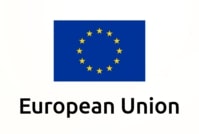Baden-Baden - the summer capital of Europe
Hot springs, two outdoor marble swimming pools available even in winter, and over 2.5 kilometers of the beautiful Lichtentaler Allee park and garden complex. All this is waiting for us in Baden-Baden.
The German resort of Baden-Baden boasts the phrase "summer capital of Europe". In the past, wealthy people used to meet here, but today it is also a friendly place for people with rather rich wallets. It is famous as a cultural center and a renowned health resort, and today it is associated with everything elegant, luxurious and elite.
It is located in the southern part of the country, in the Oos River valley, at the foot of the Black Forest. It is one of the largest health resorts in Germany and throughout Europe. The extraordinary healing properties of these areas have been known for a long time - they were already discovered by the Romans.
Sources Baden-Baden
Baden-Baden is famous for the amazing properties of hot springs, the water from which is used in various types of therapies. It flows from 12 thermal baths, from a depth of 2,000 meters, reaching a temperature of 68°C. Patients from all over Europe (and beyond) come here to treat joint pain, rheumatic ailments, metabolic disorders and heart diseases. The local waters also help with respiratory and circulatory system diseases.
The thermal baths are not only helpful, but also beautiful, especially when we are talking about the historic Roman-Irish Frederick Baths. In turn, the Caracalla thermal baths resemble ancient temples. They cover an area of over 3,000 m² and include saunas, inhalation rooms, a wellness and fitness center and numerous rest areas.
The spa is known for its hot and cold springs, as well as mineral water therapy. After visiting the thermal baths, it is worth going on a tour of the resort. The old town of Baden-Baden tempts with numerous boutiques and even more restaurants where you can taste international and local cuisine.
The summer capital of Europe
Baden-Baden attracts tourists with its springs, but it is not just a health resort. It is a picturesque town with a wonderful park and garden complex, Lichtentaler Allee, and a dazzling spa house from the 19th century, which houses one of the most beautiful casinos in the world - the symbol and showcase of the city. It hosts elegant balls, sumptuous banquets and concerts.
When talking about Baden-Baden, we cannot ignore another advantage of the resort, i.e. the opera and concert stage, the second largest in Europe. We are talking about the Festspielhaus Baden-Baden , where the Herbert von Karajan Festival takes place every year.
It is also worth mentioning the Iffezheim race track, where international horse races take place twice a year. Lovers of contemporary art should head to the Museum Frieder Burda Baden-Baden . It is located on Lichtentaler Allee, opened in 2004, and was designed by Richard Meier. You can see there one of the world's greatest collections of works by artists such as Pablo Picasso, Ernst Ludwig Kirchner, Jackson Pollock and Gerhard Richter.
Camping in Baden-Baden
Baden-Baden's tourist infrastructure is very extensive. The exclusiveness of the resort is evidenced by the luxurious hotels, of which there are an exceptionally large number here. Those interested in finding a campsite relatively close to the city may consider Campingplatz Adam oHG . The spa can be reached in approximately 15 minutes. We will pay 6-8 euros per day for a place for a camper, while accommodation for an adult costs 5-8.5 euros.
When passing through these areas, it is worth visiting nearby Rebland. Every wine lover will surely enjoy the trip - the landscape is filled with vineyards, and in both large, exclusive restaurants and tiny inns you can taste a drink with a taste incomparable to any other. We wrote about another interesting attraction in the Baden-Baden area here: Rheinfall - European Niagara .
Are you planning a holiday in Germany? You will also find other noteworthy campsites in our search engine - Germany .
A writer by profession, a passion of a cat. One day he will see what is behind the Urals - good to Vladivostok. So far, when he can, he enjoys the sun of the countries of southern Europe. And it's also fun;)
